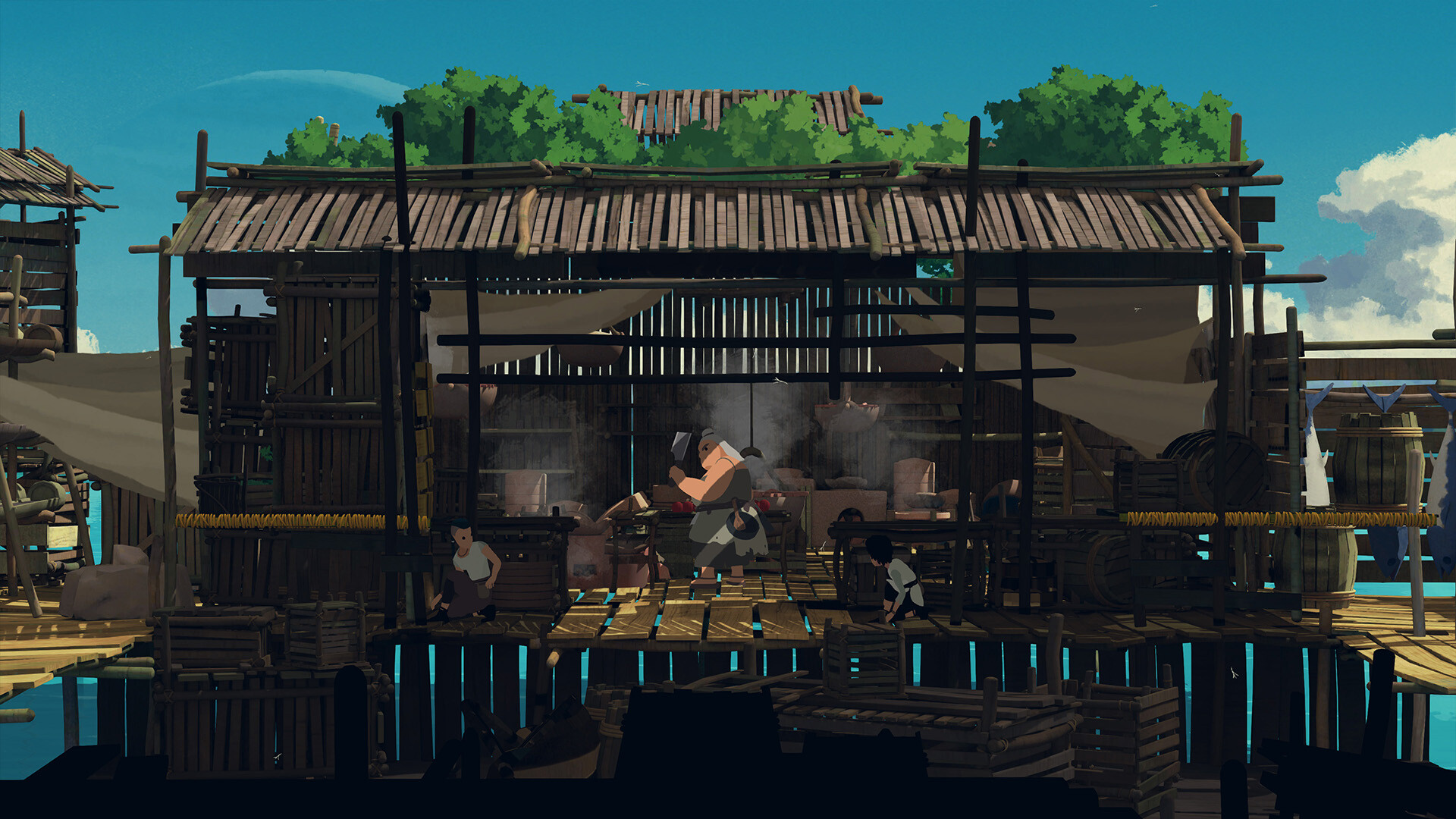Planet of Lana Review (Switch)
Planet of Lana is developed by Wishfully Studios, and is the new studio’s debut game. Created by Adam Stjarnljus and his team, a core element of focus during development was the idea of creating a game with aliens that diverged from the common interpretation of alien planets as being dark and gloomy. Colorful, bright Zelda games such as Breath of Wild, and The Wind Waker, as well as the Studio Ghibli films, were cited by Stjarnljus and his team as an inspiration for Planet of Lana.
In terms of gameplay, as I’ve been playing through the game, I can see parallels to stylized puzzle exploration games with little or no combat, such as 2017’s Rime. Similarly to Rime, Planet of Lana is an atmospheric, high quality video game experience.
Planet of Lana is a 2D sidescrolling puzzle platformer that uses an art style reminiscent of a watercolor painting. A rich vista is created using multiple layers of graphical elements. As well as being attractive aesthetically, these layers can also affect gameplay. The cinematic sound design compliments the art and results in one of the most emotive, and heart-wrenching gaming experiences so far this year. The organic home world and close-knit community of our young protagonist Lana is thrown into disarray when robotic extraterrestrials spread chaos among the hills and valleys. This review assesses the game and we find out how it ranks among the recent metroidvanias and puzzle platformers to hit the mainstream platforms and indie scene.


In Planet of Lana, the environments are detailed and stylized but realistic. A good way of describing this is that, similarly to a watercolor painting, or cel-shaded videogame like Okami, bright colors are used and proportions aren’t as in real life, but when it all animates it almost literally comes to life, and with the great classical sound design you can almost touch the stones on the grasslands and moorlands in the game. It artfully comes together for an epic experience.
Lana communicates to her friends and family and to her cat companion using fictional language that sounds appropriately like a language that you might hear in a film like Alpha, or Avatar. The enemies of the game, the aliens, really don’t look part of Lana’s home world, and you can see that they are a foreign presence.
The art and sound are some of the best things about Planet of Lana. The animation in the game is realistic, and it is a joy just to run and climb around as Lana. The platforming is so satisfying partly because of the sound design, you can hear the type of surface that you are walking over as you climb, but also because it is precise in a style more akin to old-school Prince of Persia than Super Mario.


A big element of the game is using Lana’s cat companion, Mui, to solve puzzles. You can command Mui to wait and follow, and also you can send her to areas near Lana where Lana herself can’t get to. Mui can also perform actions at certain points. Mui becomes integral to the adventure as you progress through the game. As you master the structure of puzzles, your progress will flow smoothly and you’ll get a sense that you are moving through a living, breathing world.
There’s a conflict in the world that Lana inhabits. The organic, native ecosystems are confronted by alien invaders. A defining moment in the game involves a gigantic robotic alien spider and a well-timed release of a log. This kind of moment helps to define Planet of Lana as an epic, cinematic experience akin to Ori and the Blind Forest, and other atmospheric puzzle platformers (again, Rime comes to mind). While Ori is more of a metroidvania than a puzzle platformer, Planet of Lana uses the lack of combat as a tool to build tension.
However, parts of the game can get frustrating. When I was learning the controls I found that it wasn’t initiative or simple to control Miu. After a while with the game, I got over this, and I started to enjoy the experience. Puzzles in the game, remind me of the puzzle platformer Teslegrad. If you liked that game, you’ll probably enjoy Planet of Lana. Stealth also plays a part in Planet of Lana. There are multiple instances where you’ll have to study enemy movement patterns in order to sneak past them. The stealth is usually enjoyable, and together with the satisfying platforming, being stealthy, is fun even when you fail.
Overall, Planet of Lana is a polished puzzle platformer that lacks combat but makes up for that with cool stealth and satisfying platforming. Atmospheric sound design and terrifying enemies mean that setting traps and using your intelligence is what will help you conquer the game. In terms of art, the game uses an attractive graphical style, and animation is smooth. However, it takes while to get used to the controls and to get used to using Lana’s cat companion Mui to solve puzzles. This results in a few difficulty spikes.
If you enjoy puzzle platformers such as Teslegrad, or Rime, Planet of Lana is a great game to pick up. It’s one of the most atmospheric and epic puzzle platformers released of recent times.
#Planet #Lana #Review #Switch
